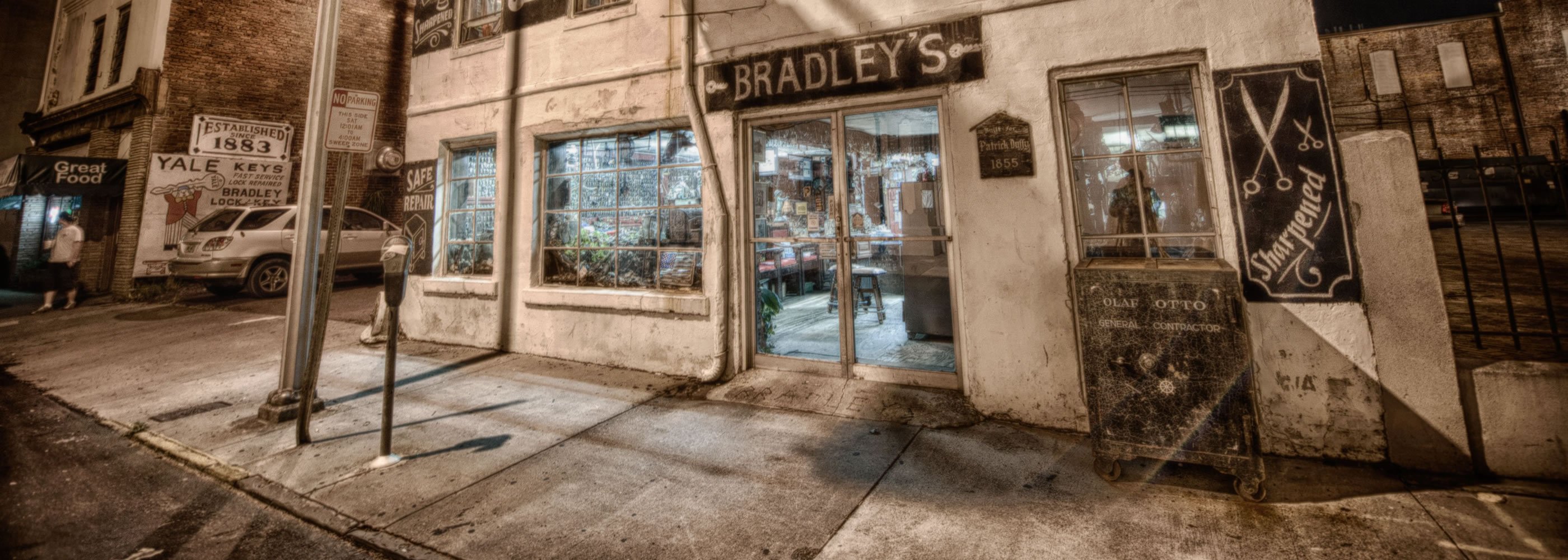
Soaring palm trees sway in the oceanfront breeze along Avenida Menendez. The click-clacks of horse-drawn carriages slowly pass by like a lazy Sunday afternoon. Walking up to the red-orange stone structure with emerald green shutters and a white-columned balcony at 46 Avenida Menendez, I pass through the old wooden gates to the courtyard aptly named “Catalina’s Garden.” Surrounded by tropical plants and that familiar cool wind, I sit on an iron bench and await to enter the building. There is so much history here, I can imagine Catalina in 1784, standing where I am now and looking up at her family’s beautiful home, thankful that they were able to save it from ruin. People are rushing by, screaming, gathering their loved ones, and I can see Bridget running back into the house during the raging fire of 1887, trying desperately and unsuccessfully to claim her personal belongings. I can see Mr. Carr and his architect carefully looking at the drawings from 1840 while they plan the rebuild of his burnt down piece of ash.
I wonder what Catalina would think of her home today? Can she see how well it has been cared for in her beloved St. Augustine? Is she still here? Is she at peace?
Originally built of tabby (a type of concrete made from burnt oyster shells, water, sand, and ash) during the first Spanish period, this private residence was owned by Señorita Juana Navarro. Juana later married Señor Salvador Francisco de Porras and together had 9 children, one of them named Catalina.
In 1764, at just 11 years old, Catalina and her family were forced to evacuate from their treasured home at 46 Avenida Menendez to Cuba when Florida became an English Colony after nearly 200 years of Spanish rule. British soldiers moved into vacated homes and the de Porras house was claimed by Walton & Company of New York. Twenty years later, in 1784, the British were forced out when East Florida returned to Spanish rule. Catalina and her new husband, along with her now widowed mother, returned from Cuba to claim the estate that was rightfully theirs. The once grand homes of St. Augustine were in such neglect and disrepair that the governor was planning to auction them off or have them demolished. Fortunately for Catalina and her family, after much persistence and intervention, they were able to save their family home from utter ruin.
The beautiful bayfront home burnt to ashes in 1887 with much of the city’s other buildings along Avenida Menendez and the plaza. It was immediately rebuilt to its original beauty (this time with poured concrete instead of tabby) by Buroughs E. Carr, who started a general store next to the home using sketches done in 1840.
W.I. Drysdale, famous for the St. Augustine alligator farm and descendant of John Drysdale, lived at 46 Avenida Menendez until 1976 when he sold the family home to Puerta Verde Restaurant. Later, the building became Chart House Restaurant, then Catalina’s Garden (named after Catalina de Porras), and as of the late 90’s, Harry’s Seafood Bar and Grille, which still stands today.
April 12th, 1887: “The principal part of the city is destroyed by fire. The county courthouse is also burned.”
“Render every assistance to the city officials in the way of providing rooms in the post office building”, Secretary Fairchild telegraphed in reply to the Collector of Customs in St. Augustine.
On April 12th, 1887, a fire started in the paint room of C.F. Hamblen’s store and swept through St. Augustine destroying everything in its wake. The Cathedral, Edwards Hotel, County Courthouse, Vedder’s Museum, First National Bank, Planter’s House and the Florida House Annex, the Sinclair block, Chamberlin’s store, Mr. Scott’s residence, Wetter’s hotel, the St. Augustine Hotel, the old slave market, and the fire department itself were completely devastated. 46 Avenida Menendez was on that daunting list.
Bridget Barry, a servant woman of color, lost her life by running back into the servants’ quarters for her effects during the destructive fire. Her spirit is said to still haunt the building today.
The smell of smoke, burning clothes, sudden movements, feelings of nervousness and restlessness, items moving seemingly on their own, sounds of voices, chills, and a presence in the ladies room have all been reported. Did Bridget really die in the fire of 1887 and never leave? Could it be Catalina? She and her family fought so hard to keep their residence, perhaps she could never truly depart? Spend some time in “Catalina’s Garden”, the outdoor dining area of Harry’s Seafood Restaurant, and try not to drink too much water; you might have to use the upstairs restroom and you never know who might be awaiting you.
46 Avenida Menendez is home to Harry’s Seafood Bar and Grill. You can learn more about the history of this historic home on one of our walking tours with Ghost City Tours.

St. Augustine's famous haunted Fort

One of St. Augustine's haunted cemeteries

The famous haunted Lighthouse